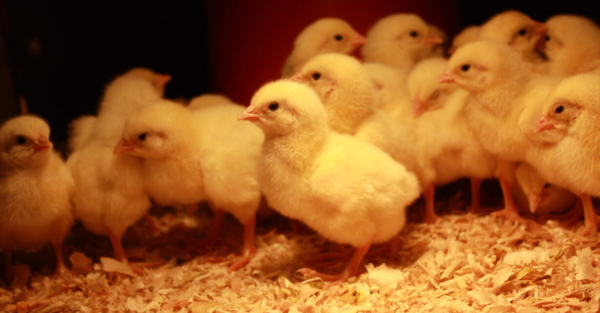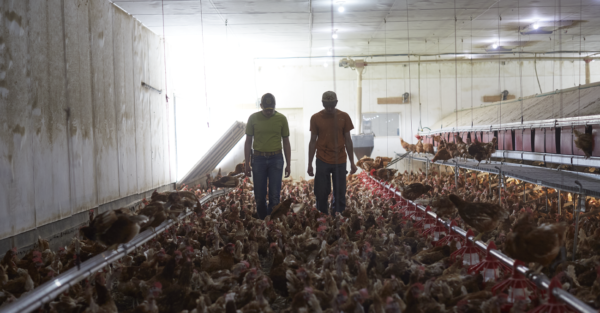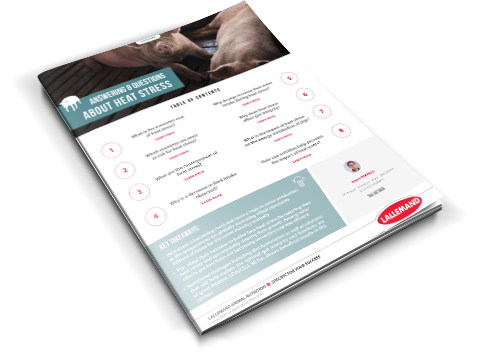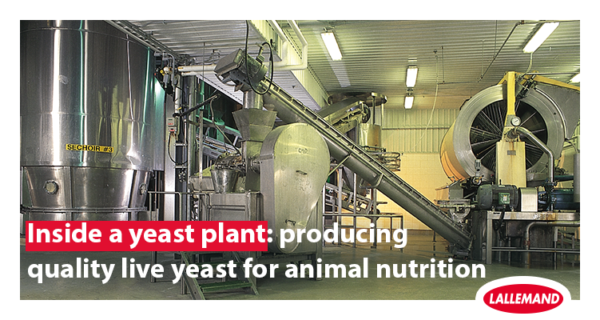Blog | Reading Time 6 minutes
Expert’s interview: Livia Moscati, IZS Istituto Zooprofilattico Sperimentale
- Livia Moscati, Head of Umbria Animal Health and Welfare
Istituto Zooprofilattico Sperimentale dell’Umbria e delle Marche “Togo Rosati” (IZSUM) - Based in Perugia, Italy
- Areas of experience: animal health & welfare, innate immune response, inflammatory response
Over the last 10 years, we have seen an huge growth trend of scientific publications related to the animal microbiota understanding and the influences of its composition on animal welfare and performance, in particular using new genomic-based technologies.
Could you tell us how you have been involved in that
passionate topic?
5 years ago, my research team and I got involved in the interesting topic of microbiota composition. At first, we realized that this topic could have been one of the most important and investigated arguments in future years, and thanks to new genomic-based technologies, and international collaboration, we started to work in this field.
When analyzing intestinal microbial communities as a whole, it is sometimes difficult to identify which bacteria are positive and which are negative.
Could you mention some bacterial genera that have a particularly positive impact on poultry gut health?
A definition of a healthy gut microbiota in a eubiotic status is still not completely defined. Globally, a healthy gut microbiota is associated with the concept that the microbial community is mainly composed of potentially beneficial species, while pathogenic bacteria are present with a percentage too low to be infectious (Lebba et al., 2016). Moreover, a homogeneous, richer and balanced gut microbiota is widely acknowledged to be beneficial (Rinninella et al., 2019). Lactobacillus and Bifidobacterium strains are usually known to be considered beneficial bacteria and are often administrated as probiotics. More recently, information gained from several studies is helping to set a rationale for the selection of new beneficial bacteria such as Faecalibacterium prausnitzii (Martín et al., 2017), Akkermansia muciniphila (Cani and De Vos, 2017), Bacteroides uniforms, and Bacteroides fragilis (Hage et al., 2017).
Now, thinking more precisely about Faecalibacterium prausnitzii, known as a “gut health marker”, could you tell us more about the suspected relationship between F. prausnitzii abundance and animal performance in broilers?
It is well established that F. prausnitzii plays an important role in gastrointestinal homeostasis, resulting in the reduction of enteric pathological status, becoming a gut health biomarker. In fact, F. prausnitzii decrease in the gut microbiota is correlated with enteric disorders in both humans and animals, such as Crohn’s disease, inflammatory bowel disease, colorectal cancer, and irritable bowel syndrome (Cao et al., 2014; Dave et al., 2011; Lopez-Siles et al., 2018; Martín et al., 2017; Miquel et al., 2016, 2013; Sitkin and Pokrotnieks, 2018).
A study (Torok et al., 2011) showed a higher proportion of the genus Faecalibacterium in broilers with better feed conversion rates (FCR) in comparison with those showing a low FCR;
these data are in accordance with what we found in our study (Massacci et al., 2019), in which the genus Faecalibacterium was more abundant in animals presenting lower FCR and consequently better performance.Recent studies have shown the importance of normal early colonization of the gut tract against pathogens such as Salmonella spp. and E.coli.
What is your general opinion about the efficacy of probiotics based on a preventive approach instead of a healing one? How could the internal and external bacteria environment of a modern farm impact the health and gut microbiota balance of the animals?As well-known, the gut microbiota composition plays an important role in the health of individuals, and modulating the population of bacteria in the gut may improve the health of the animals and decrease the risk of diseases (Liu et al., 2018; Patel and Dupont, 2015; Roselli et al., 2017; Tossou et al., 2016; Tran et al., 2018; Van Der Aar et al., 2017).
In fact, during the last years, research has moved on towards the bacterio-therapy that includes the use of probiotics in order to limit the spread of infections carried out by pathogens. There is strong evidence in the literature on how the administration of probiotics could limit the Salmonella and E. coli infections in animals, consequently reducing the risk of zoonosis. Moreover, it is also well-established how the environmental determinants could affect the composition of the gut microbiota of animals.
Antibiotic-use reduction is a worldwide growing trend as an answer to the antimicrobial resistance serious threat to public health. You have been participating in different studies aiming at analyzing the influences of various alternative solutions on broilers and turkeys production.
Could you highlight some of your key learnings from these investigations? According to you, how probiotics could be part of an integrated approach to improve animal welfare?
In the last five years, growing concerns have been expressed by international health agencies and consumers about the transmission of antibiotic-resistant bacteria from poultry meat to humans.
Consequently, poultry producers have adopted alternative production systems based on reduced antibiotic usage, including organic and antibiotic-free production.
According to what was already said, probiotics become much more powerful and valuable when used as preventive health promoters and gut microbiota stabilizers, limiting the colonization of pathogens. Probiotic supplementation has the added benefit of allowing reduced antibiotic use in poultry and directly addressing consumer demand for a healthier residue-free meat product. Our studies are in line with those data findings. In my opinion, probiotics could be part of an integrated approach to improve animal welfare, reducing antibiotic use on-farm and limiting the spread of zoonotic bacteria.
Finally, regarding food safety and the incidence of a balanced gut microbiota on the risk of meat contaminations. You have been involved in a recent study aiming at assessing the effect of a probiotic live yeast (Saccharomyces cerevisiae boulardii CNCM I-1079) on the intestinal ecosystem of broilers during a Campylobacter jejuni infection.
What are the key learnings from this work about the effect of this probiotic in this context?
The probiotic administration is recognized as one of the most promising dietary strategies to improve animal performance and welfare, reducing pathogen colonization, and meet consumers’ demand for more natural meat and meat products.
Globally, the results of the study revealed that Saccharomyces cerevisiae boulardii CNCM I-1079 supplementation could improve growth performance, effectively modulating the intestinal ecosystem, leading to a higher abundance of beneficial microorganisms and modifying the intestinal mucosa architecture, enhancing the health status of broilers and limiting the excretion of Campylobacter.
Consequently, the risk to have contaminated meat might be decreased. To complete the findings from our study, deeper investigations involving a complete analysis on meat quality could also be considered.
Want to learn more about the study?
Published Aug 3, 2021
Related articles
Need specific information?
Talk to an expert


